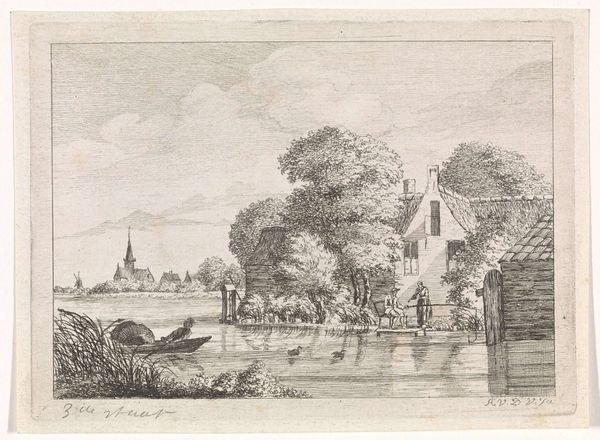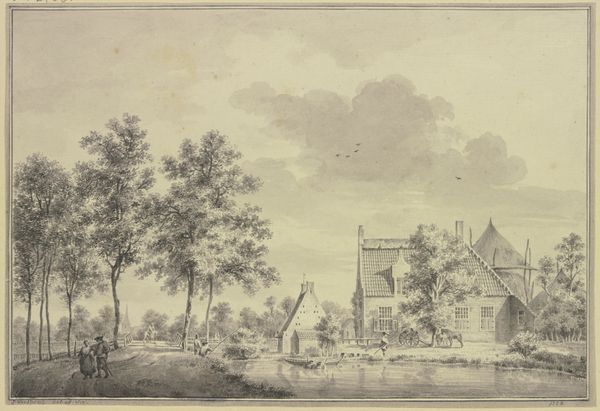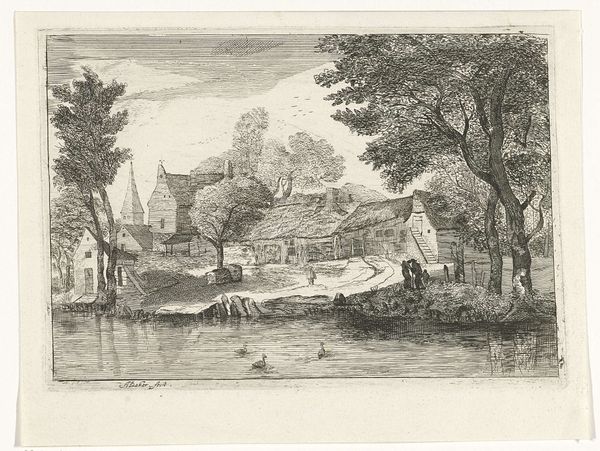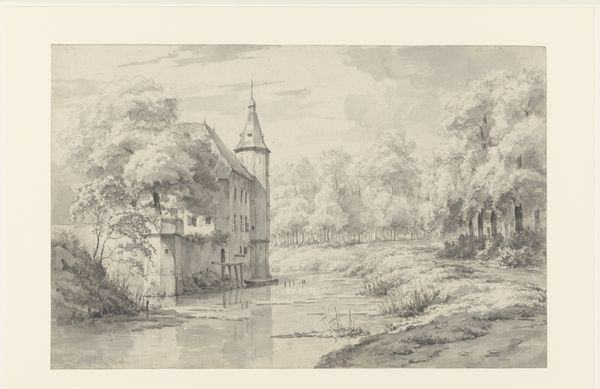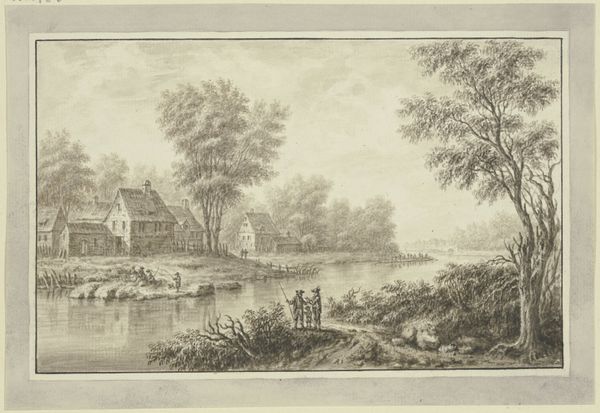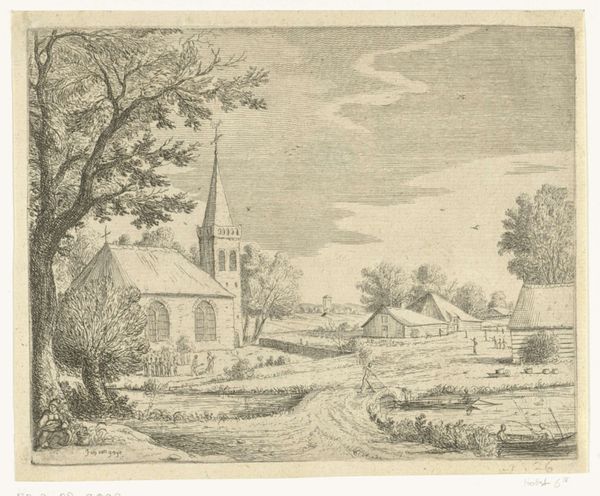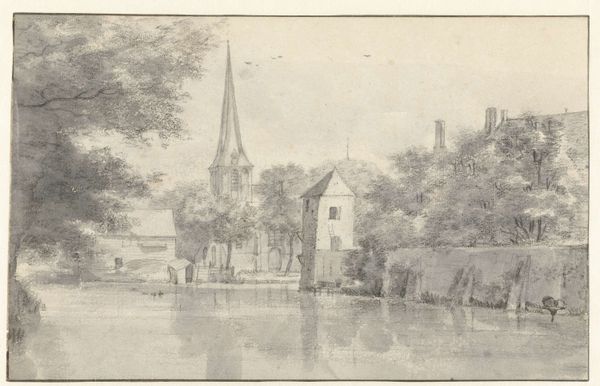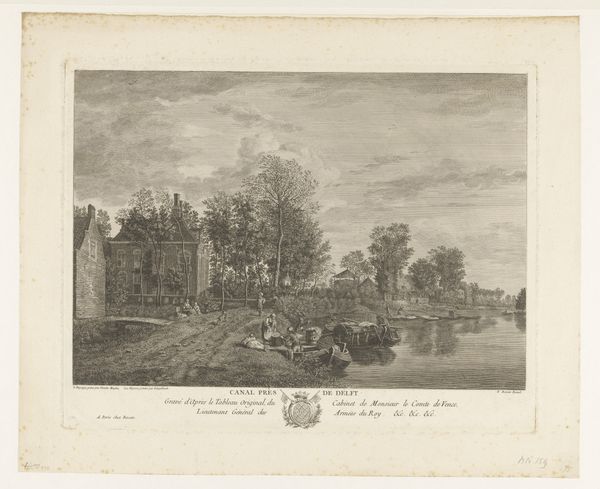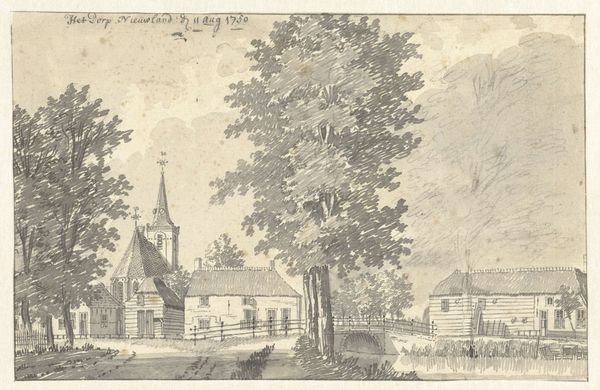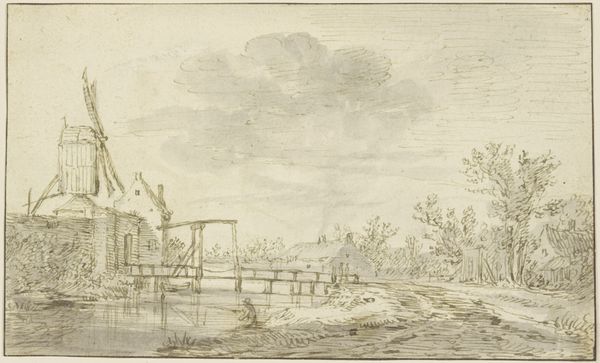
Dimensions: sheet: 10 3/16 x 15 13/16 in. (25.9 x 40.2 cm)
Copyright: Public Domain
Curator: Dirk Verrijk gives us this fascinating rendering, entitled "A View of the Wittevrouwenpoort, Utrecht." Likely created somewhere between 1749 and 1786, it's currently residing at the Metropolitan Museum of Art. What strikes you immediately? Editor: There's such a peaceful serenity, almost artificially staged. The light is distributed uniformly and the whole scene is presented in monochrome, the buildings perfectly mirror on the river like an imagined ideal. Curator: The materiality really supports this, don't you think? The detailed ink work, probably made with a quill pen, to describe a sense of spatial composition is great here. There are people placed in the city structure as the decoration. A testament to precise production if you ask me. Editor: Indeed. We can unpack it further as an imagined space within the broader framework of Dutch power. Consider that Verrijk creates this image during a period of political unrest. The picturesque rendering, particularly the gate as an entryway, can be interpreted as both, literally and figuratively an image that control the influx of ideas into Dutch Republic society. Curator: The fact that Verrijk captures the Wittevrouwenpoort as a gate could reflect its socio-political role. These spaces are intersections for many types of cultural product. Who’s controlling what gets in? Or out? Verrijk seems focused on just reproducing a likeness of a physical thing. Editor: It’s too neutral to simply reproduce physical appearances! There’s clearly more. It begs the question, for whom, during that time, and in which community are these reflections being produced and circulated? Perhaps as images for elite consumers who yearned to idealize the structure of society... Curator: Ah, so maybe it represents social tensions within this urban space after all. A site for the exchange of resources and status. A controlled vision, neatly packaged and consumed by the elite. Editor: It's this dialogue between our approaches that unveils deeper insights. Examining artworks with both material scrutiny and contextual awareness truly enriches our understanding of historical narratives. Curator: Absolutely, highlighting not just the physical presence but also the intricate networks of production and social influence. It all just brings into view how we can engage meaningfully with art.
Comments
No comments
Be the first to comment and join the conversation on the ultimate creative platform.
